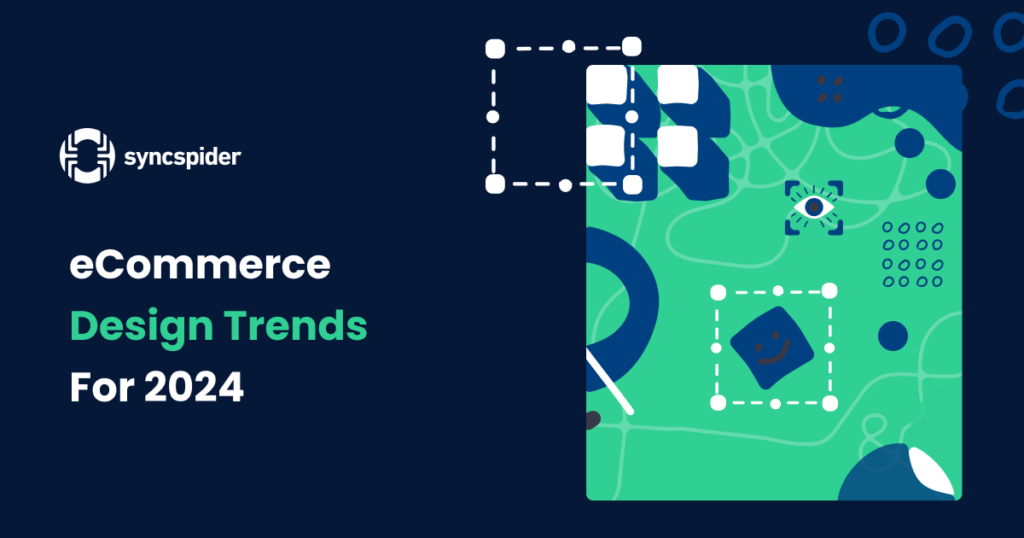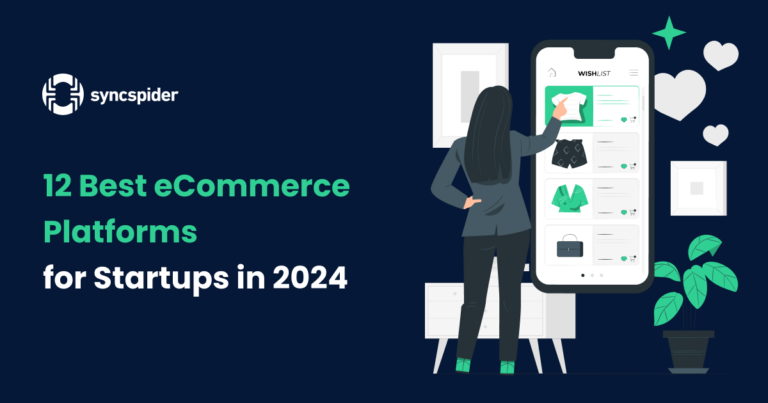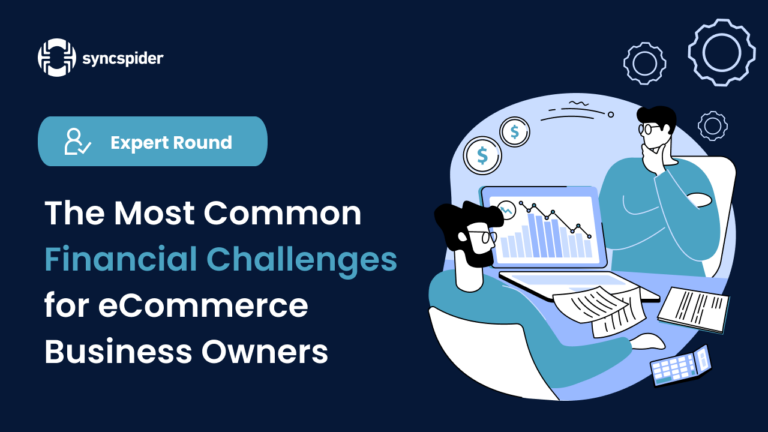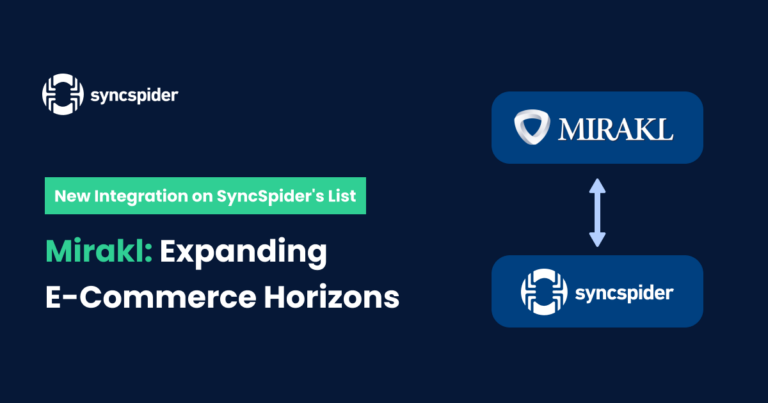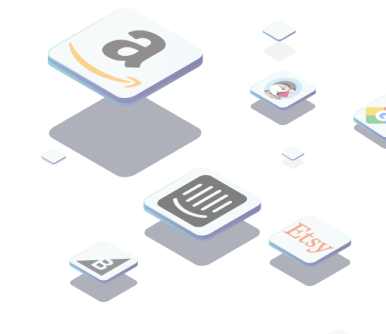Ever been to an art gallery of the future? Well, buckle up – that’s where we’re heading! We’re about to explore the most anticipated eCommerce design trends of 2024, treating each as a distinct piece of art that paints a part of the future eCommerce landscape.
Just like curators in a modern digital art gallery, we’ll examine the intricate details of these ‘masterpieces’, appreciate their creativity, and understand the vision behind them. If you’re curious about some of the challenges that come with this rapidly evolving landscape, check out this podcast on navigating the eCommerce jungle.
But now, let’s step into our virtual gallery and check out the artistry that awaits in online shopping!
The Art and Science of eCommerce Design Trends
Welcome to the first exhibit of our virtual gallery tour, where the worlds of art and science converge in eCommerce design!
Just like observing a captivating artwork, the aesthetic appeal in eCommerce design plays a crucial role in drawing us in. The vibrant palette, engaging layout, and creative typography – these artistic elements craft an inviting and visually pleasing shopping stage.
But there’s more than meets the eye. Behind this artistic façade lies the scientific core that keeps the wheels turning smoothly. It’s all about intuitive navigation, streamlined checkout processes, and responsive design. This functionality ensures that customers don’t just admire from the sidelines; they engage, interact, and – most importantly – make purchases.
So, as we explore our virtual gallery of upcoming trends, remember: good eCommerce design isn’t just a feast for the eyes, it’s a smoothly operating machine behind the scenes. It’s where the magic of art meets the logic of science. To make sure your online store has all the necessary features, make sure to check out the best eCommerce integrations that an online store needs, before giving the orders to your web designer.
Okay artsy group, let’s get to the next part of the exhibition!
Must-Have Features For Any eCommerce Online Store
Before we get to the actual design trends, here are some things that will surely make an impact in 2024! These things may not be concrete styles and aesthetics, but they surely are something to consider and include in your eCommerce website if you want to stay on top!
These are the building blocks that come together to create a superior, user-centric online shopping experience. Let’s explore seven key components that modern eCommerce designs are implementing:
Storytelling through visuals
Just as each artwork tells a story, visual storytelling in eCommerce brings the brand and its products to life. Use high-quality images, captivating videos, and informative infographics. Visual storytelling, as well as brand storytelling, brings a narrative that engages consumers. It forms an emotional connection, guiding users seamlessly through their shopping journey.
- Emotive Imagery: Images are carefully curated to emotionally resonate with consumers, enhancing their connection with the brand. The more people feel connected to your brand, the more likely they are to buy from it.
- Engaging Videos: Videos are strategically used to provide detailed product demos, brand stories, or user-generated content to keep consumers engaged.
- Informative Infographics: Infographics simplify complex information, providing customers with easily digestible and visually appealing content.
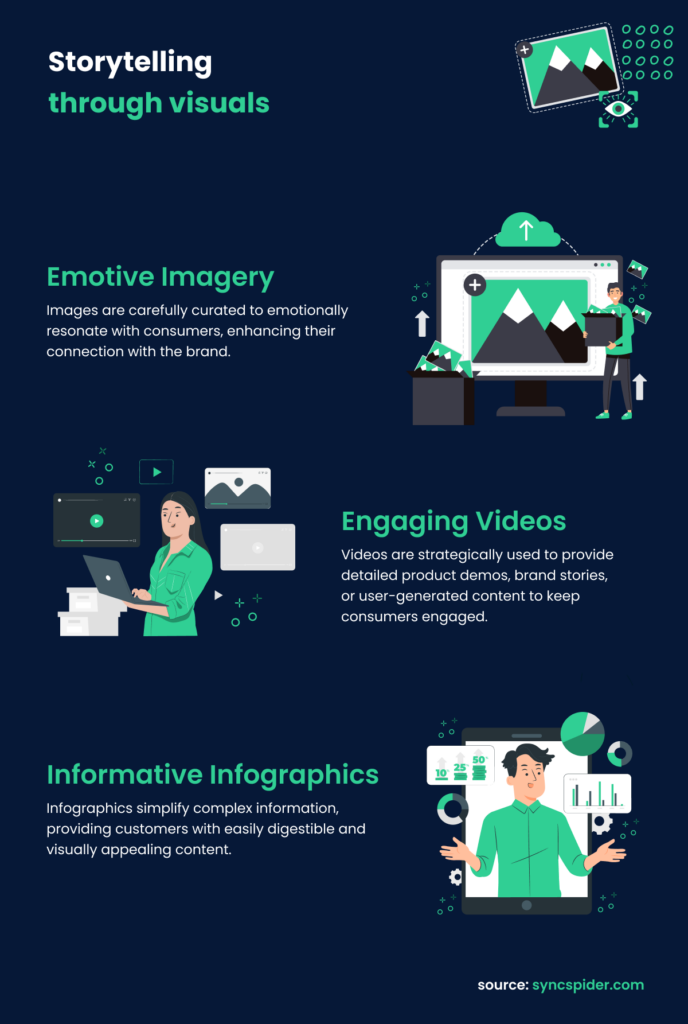
Mobile-First Design Approach
We’ve already talked about this – people are choosing their smartphones for shopping rather than any other device! So, naturally, the mobile-first approach is a must component of modern eCommerce design. This methodology centers on optimal performance on small screens, ensuring intuitive navigation, quick load times, and pleasing visuals.
- Simplicity: Prioritizes essential information and functionality, avoiding clutter on small screens.
- Responsiveness: Designs adapt seamlessly to different screen sizes, ensuring a consistent experience across devices.
- Speed: Emphasizes efficient loading and smooth operation for improved user experience on mobile devices.
Engaging Filter Functions
Engaging filter functions serve as a compass, guiding customers through extensive product offerings. But how can you make these filter functions more engaging? Revolutionizing your business with SyncSpider’s eCommerce product slider can be a game-changer for this!
Without filters, we would be scrolling endlessly, looking for that specific product we want! By allowing consumers to narrow down their choices based on specific criteria, these filters streamline the shopping process and enhance user satisfaction.
- User-Friendly Interface: Filter functions are intuitively designed, making them easily accessible and straightforward to use.
- Versatile Options: A diverse range of filters are available, offering consumers the flexibility to sort, view, and select products based on their unique preferences.
- Speed and Efficiency: Filters deliver quick and accurate results, streamlining the shopping journey and saving the consumers’ time.
AI and Personalization
Artificial Intelligence (AI) and machine learning technologies are revolutionizing the eCommerce landscape by providing highly personalized experiences. If you’re curious about the marketing strategies that can enhance these experiences, you can always check out guides to eCommerce marketing strategies to help you out!
By analyzing user behaviors and preferences, AI provides tailored product suggestions and custom content, enhancing the relevance and engagement of the shopping journey!
Don’t we all love when our shopping experience is as personalized as possible?
- Tailored Recommendations: AI algorithms analyze browsing and purchasing behaviors to offer personalized product suggestions.
- Dynamic Content: AI enables the display of custom content based on users’ shopping habits, preferences, and past interactions.
- Improved User Engagement: Personalized content and product recommendations improve user engagement and conversion rate.
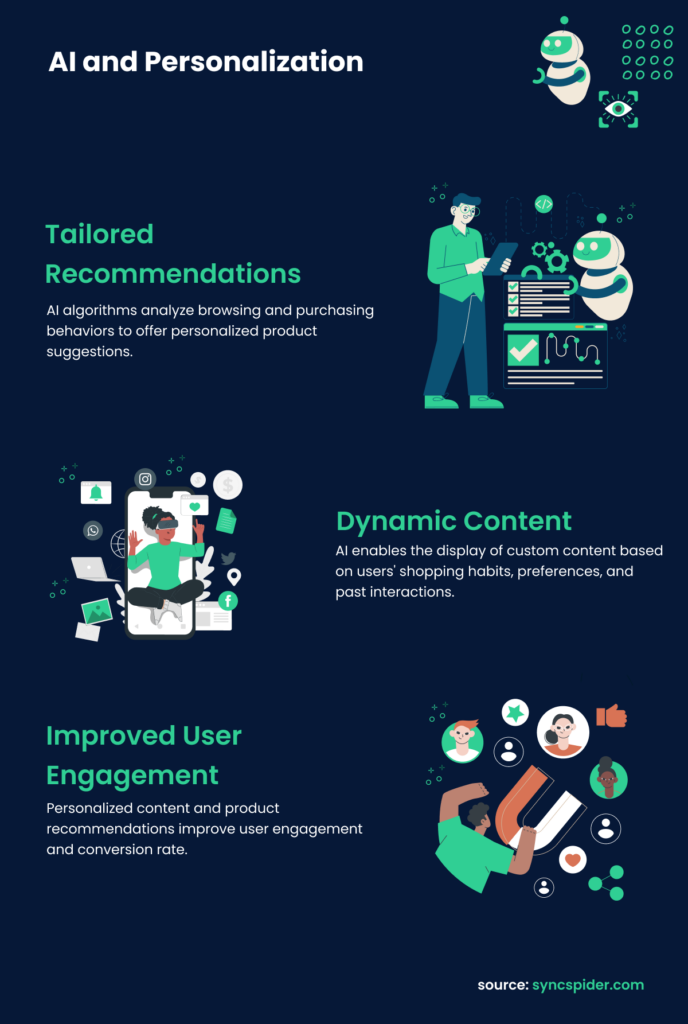
Immersive Product Visualization
Immersive product visualization enhances the online shopping experience by providing detailed views of products. Technologies like 3D modeling and augmented reality (AR) allow consumers to examine every aspect of a product, closely mimicking the in-store experience.
No need to leave the house anymore, it seems!
- 3D Modeling: Allows complete product exploration, instilling purchasing confidence in consumers.
- Augmented Reality: Enables consumers to view products in their own environment, enhancing their ability to make informed purchase decisions.
- Increased Engagement: Interactive visualization techniques contribute to a more engaging and immersive shopping experience.
Interactive Content
Interactive content adds a layer of engagement to the shopping experience. It evokes active participation from consumers through elements such as quizzes, polls, games, or interactive videos. This engagement can heighten interest, increase time spent on the site, and, of course, drive purchases.
And we all love some fun while shopping, don’t we?
- Active Participation: Interactive elements draw users into an active role, increasing their engagement with the site.
- Enhanced User Experience: Interactive content varies the user experience, making it more dynamic and enjoyable.
- Increased Conversions: Engaging interactive elements can lead to increased time on the site and higher conversion rates.
Microinteractions in Design
Microinteractions are subtle design elements that guide users and provide feedback. These could be a color change when a button is clicked, an animation when an item is added to the cart, or a small vibration when a task is completed. So cute! Though small, these features significantly enhance user engagement and the overall shopping experience.
And, let’s be real – it’s super fun!
- Feedback: Using micro-interactions to give instant feedback or confirmation of user actions.
- Visual Guidance: Elements like button animations or color changes guide users through their tasks.
- User Engagement: Incorporating subtle animations or interactions to keep users engaged and interested.
Now, last but not least, this one is separate from design ideas and trends. However, it is something that must be taken into consideration! As a society, it is our duty to provide equal experience to each person, so implementing all of this into your eCommerce web design is non-negotiable.
Design for Accessibility
As the digital world becomes more inclusive, eCommerce websites are prioritizing designs that cater to all users, including those with disabilities. From color contrasts and font sizes for the visually impaired to keyboard navigation for those unable to use a mouse, the accessible design ensures that everybody has equal access to online shopping experiences.
- Contrast and Colors: Designing with high contrasting colors for better visibility and readability.
- Font Choices: Using clear, easily readable fonts and adjustable font sizes for users with vision impairments.
- User Interface: Incorporating features like keyboard-friendly navigation and alt text for images, catering to various accessibility needs.
Now that you have insider information on what your eCommerce simply must include – at least some of it – let’s jump to some aesthetics and visual trends you should consider in 2024!
Graphic Design – Aesthetics And Styling Trends For 2024
Today, aesthetics speaks more than words! It can show off who you are and how you want to be seen in split seconds! The same goes for your brand – the first impression is based on the main page visuals and style of your eCommerce.
Why not make it modern and cool? Here are some of the popular aesthetics that will surely boom in 2024!
Minimalist Design
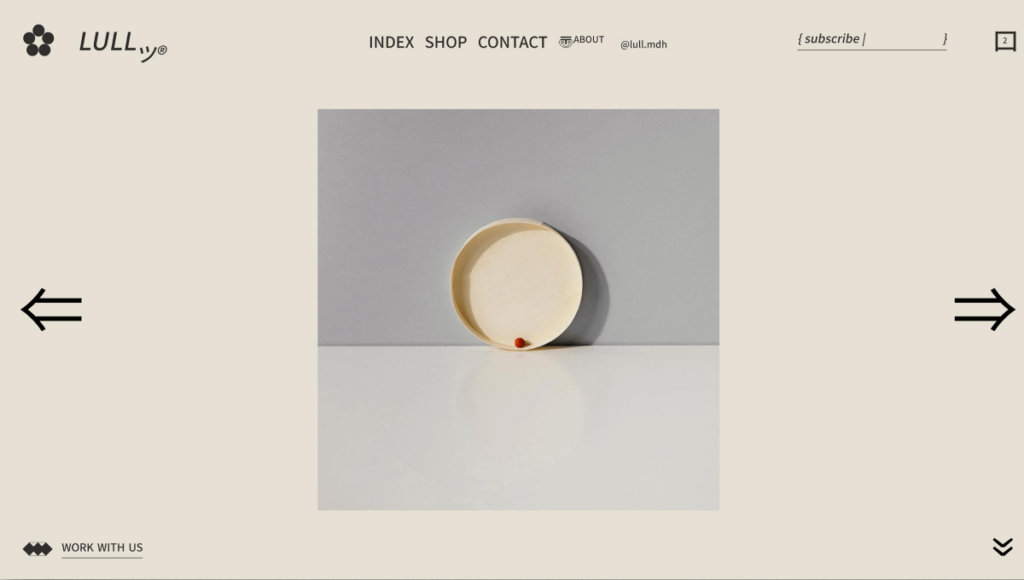
Source: Freepik
Minimalist design is all about achieving maximum impact with minimal elements. This trend strips down the design to its most basic forms, focusing on essential components and removing any element that isn’t serving a clear purpose. The result is a clean, clear, and focused aesthetic that moves distractions out of the way and lets users concentrate on the functionality of the site.
- Colors: Limited color palette, often with neutral tones.
- Typography: Clear and straightforward, without excessive decorative elements.
- Style: Reduced design elements to emphasize essential content and functionality.
Dark Mode / Black and White Aesthetic
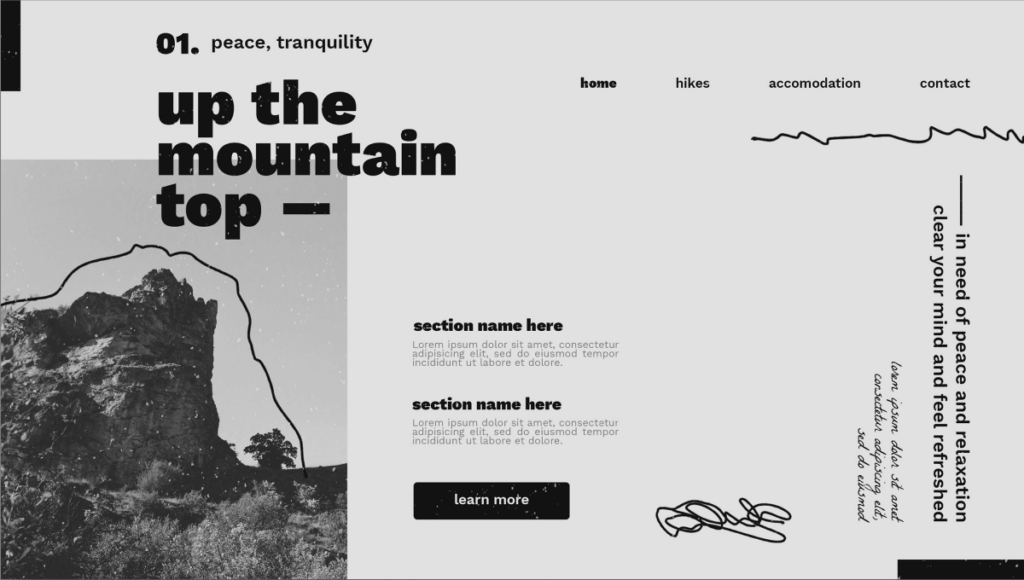 Source: Freepik
Source: Freepik
With its roots in making screen-viewing comfortable in low-light environments, the dark mode trend has evolved to be a stylish aesthetic in its own right. By using primarily black, white, and grayscale, this design trend creates a visually striking and sophisticated layout that reduces eye strain and improves the visibility of other design elements.
Many people opt for this style these days since it’s a lot more comfortable on the eyes, especially if you spend a lot of time looking at the screen.
- Colors: Largely black, white, and grayscale.
- Typography: Bold and contrasting to stand out against the dark background.
- Style: Focus on contrast and emphasis on other design elements.
Skeuomorphism
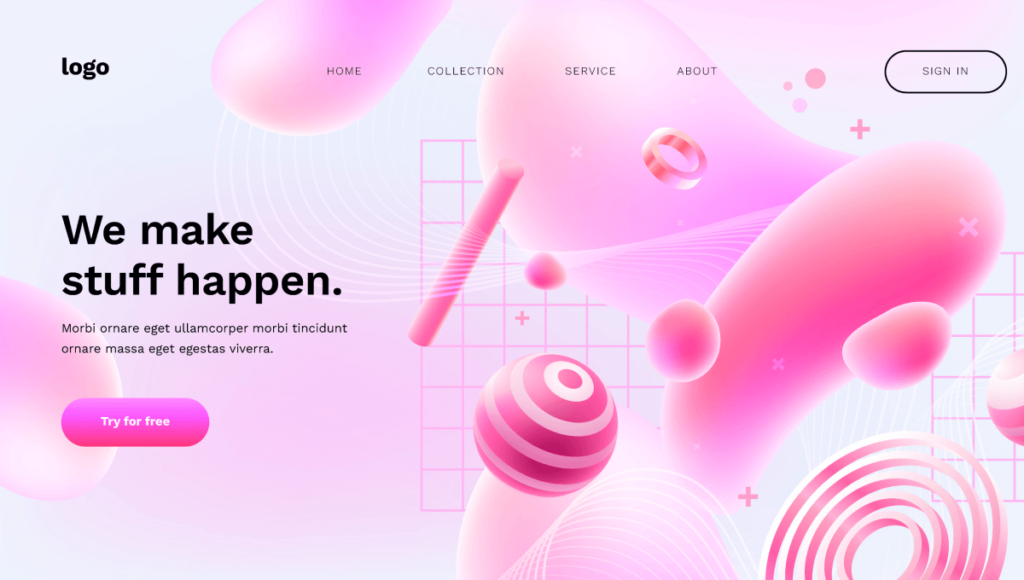 Source: Freepik
Source: Freepik
Skeuomorphism is a design style that mimics real-world objects and textures. It was a defining aesthetic in early UI designs, where designers used familiar objects from the physical world to make digital interfaces easy to understand. Despite being less used in recent years due to the rise of flat and material design, skeuomorphism is seeing a comeback in certain applications.
- Colors: True-to-life color palettes reflecting real-world materials.
- Typography: Often traditional, replicating handwriting or printed text.
- Style: Mimics real-world objects and textures, often giving a 3D effect with detailed shadows and textures.
Neumorphism
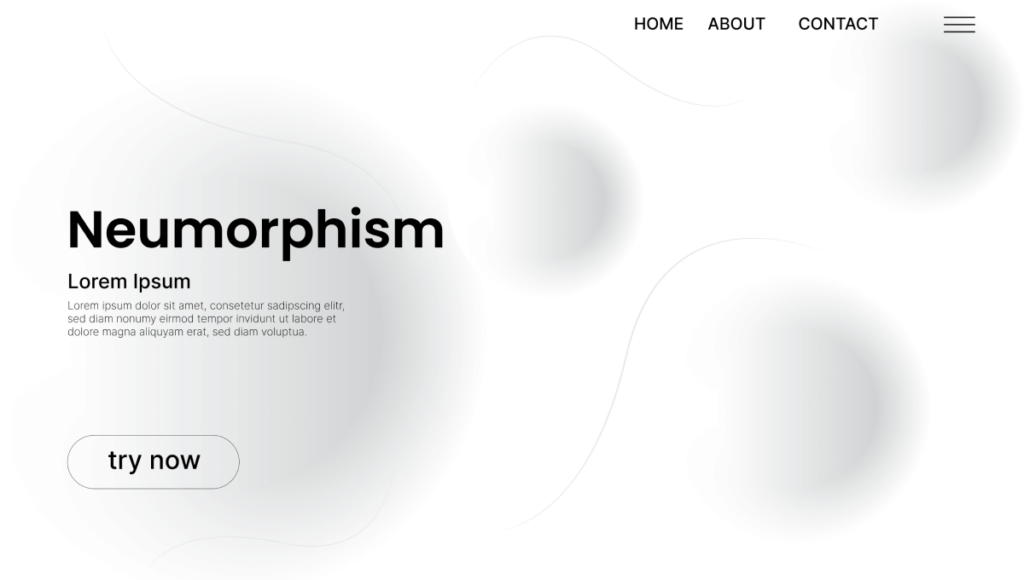 Source: Freepik
Source: Freepik
Neumorphism is like a softer, friendlier version of skeuomorphism. It blends both realism and modernism by using selective shadows, gradients, and semi-flat colors to create a pseudo-3D effect. The design elements often look like they’ve been extruded from the background and are made of soft, plush material, providing a unique user interface experience.
- Colors: Light color palettes are generally preferred.
- Typography: Simple and clean to match the overall subdued aesthetic.
- Style: Emulates real-world objects through soft shadows, layering, and depth.
Glassmorphism
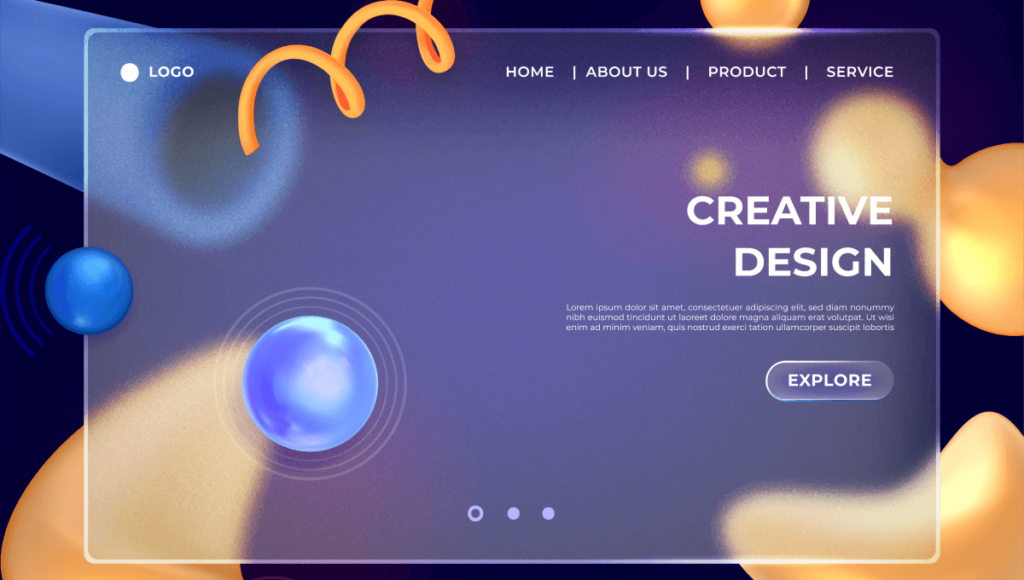 Source: Freepik
Source: Freepik
Glassmorphism is one of the latest trends in the user interface design world. It’s characterized by a frosted glass effect, with elements featuring a semi-transparent background that blurs whatever is behind them. Combined with colorful gradients and light effects, this creates a feeling of depth, luminosity, and a futuristic touch to designs.
It’s like sending the 80s into the future!
- Colors: Light pastel or neon colors.
- Typography: Often semi-transparent or with a frosted-glass effect.
- Style: Frosted glass effect with a sense of depth and layered interface.
Vaporwave Aesthetic
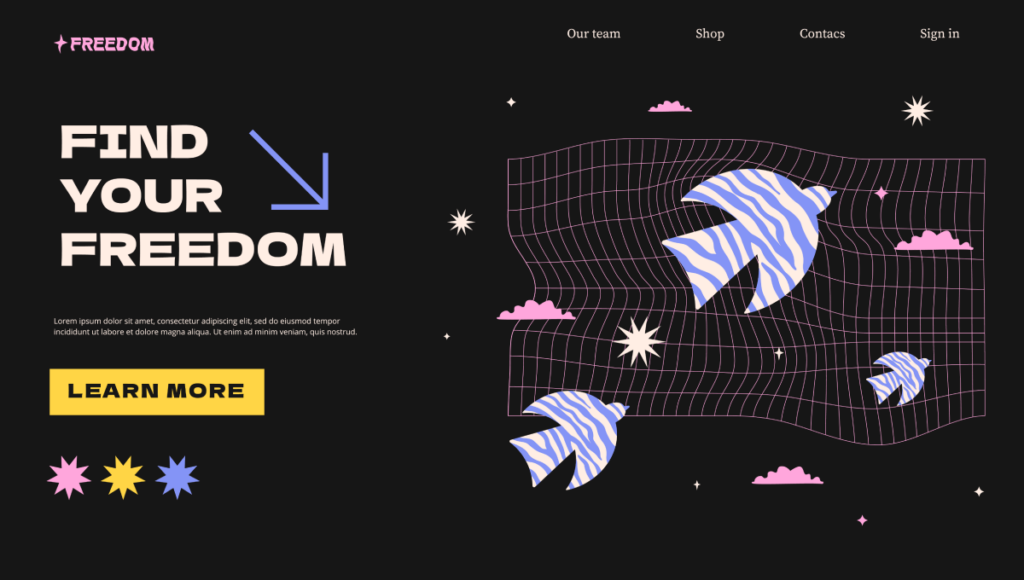 Source: Freepik
Source: Freepik
Vaporwave takes us on a nostalgic trip back to the 80s and 90s with its bright neon colors, pixelated typography, and vintage imagery. It blends old styles with contemporary design elements to produce a dreamy, surreal, and sometimes disconcerting aesthetic that seeks to evoke the feeling of a past era while still seeming futuristic.
We could say that it’s literally a comeback aesthetic much preferred by the 90s kids!
- Colors: Bright, neon, and psychedelic colors.
- Typography: Retro, pixelated, and often bold fonts.
- Style: Collage of nostalgic imagery, often with a futuristic feel.
Brutalism
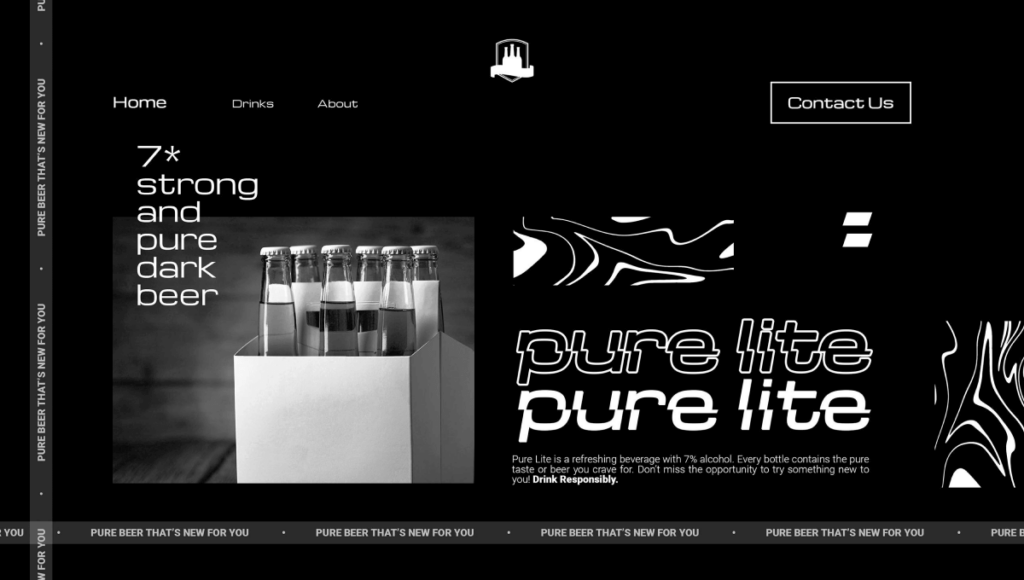 Source: Freepik
Source: Freepik
Brutalism is not for the faint of heart – it breaks away from standard design conventions with its raw and unpolished aesthetics. It’s all about stark contrasts, bold and often mismatched colors, and layouts that defy traditional grids and structures. The result is a design that commands attention and stands out from the crowd.
So, if your brand is for the bold ones, this may seem like a perfect aesthetic for you!
- Colors: Bold, high contrast, and often mismatched colors.
- Typography: Simple, bold, and often non-traditional fonts.
- Style: Defies traditional layouts and grids, often with a rough, unfinished feel.
These are just some of the top web design trends, but we encourage you to do some research and find the one that fits your brand’s personality the most!
And, to ease up the process, here are key features of every aesthesic that we mentioned – in one place:
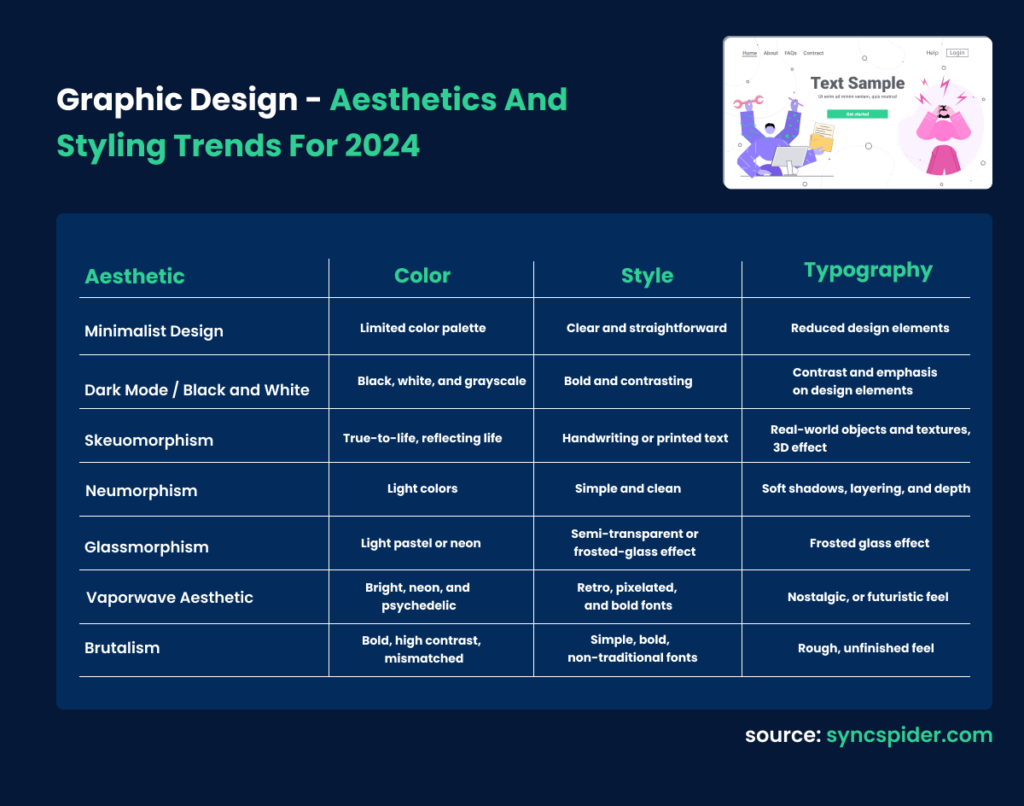
Adapt To The Future: The New Wave of eCommerce Design
Alright, now that you’re all caught up with the latest trends, you might be wondering, “How do I integrate these exciting trends into my eCommerce site?” Great question! Let’s dive into some practical tips!
1. Always Stay True to Your Brand:
Trends come and go but your brand’s identity is timeless. While it’s tempting to jump onto every new and exciting swing, it’s crucial to ensure the trend resonates with your brand’s personality and message. That’s what top-selling companies are doing, and it’s proven to work!
A design trend should enhance and complement your brand ethos, not overshadow it. So always ask yourself, “Does this trend align with my brand’s values and aesthetics?”, and there will be your answer whether to go for it or not!
2. User Experience Above All Else:
In the great kingdom of eCommerce design, user experience is king. No matter how visually appealing a design trend might be, if it’s not intuitive, easy to navigate, or mobile-friendly, it can do more harm than good.
Always prioritize your customers’ comfort and convenience before integrating any trend into your website’s design. After all, it’s the customer satisfaction that matters the most.
3. Test, Test, Test:
Before you dive headfirst into implementing a new design, it’s wise to test the waters. Use A/B testing, gather feedback, and analyze metrics to measure the impact of the new design on user behavior and conversion rates.
This will provide valuable insights and help you make informed decisions, saving valuable time and resources. It’s just like testing the water with your pinkie before jumping into the pool!
4. Seek Professional Help:
Implementing a new design trend can be a complex process, and there’s no harm in seeking professional guidance. Design professionals bring their expertise, creativity, and a fresh perspective to the table.
They can help seamlessly integrate trends without compromising the site’s core functionality or aesthetics, which is especially important if you want to keep your eCommerce store running smoothly while giving your business a bit of makeup.
Remember, the goal isn’t to follow trends for the sake of being trendy but to adapt them in a way that enhances your unique brand and caters to your customer’s needs and preferences. At the intersection of design innovation, brand identity, and customer preferences, you’ll find your sweet spot – and learn to stick to it!
Case Studies: Pioneers of Design Trends In eCommerce
Now, let’s meet some trendsetting pioneers who’ve successfully embraced these design evolutions. You’ve certainly already heard about these brands, but let us break down their design in a few sentences:
- Apple (Minimalist Design and Glassmorphism): Let’s start with the tech titan, Apple. The masters of minimalist design, they’ve also recently embraced glassmorphism. Their iOS interfaces feature simplistic layouts, ample white space, and frosted glass-like elements. This is making them a leader in design evolution.
- Gucci (AR in Shopping): Luxury fashion house, Gucci, has leaped into the AR space! They’ve introduced an AR functionality to their app that lets customers “try on” sneakers. How cool is that! This has taken product visualization to the next level, delighting customers and setting a precedent in the fashion industry.
- ASOS (Engaging Filter Functions): Online fashion retailer ASOS is most certainly winning the filter game. Their website features a wide range of filter options, from size, and price, to sustainable options, making the online shopping experience smooth and personalized.
If all of this doesn’t make you feel like we’re living in the future, we don’t know what will!
It’s true that these brands may not have the biggest eCommerce market share worldwide. But! They have not only modernized their online presence but also elevated their user experience, proving that adapting to the future can indeed lead to success.
Embrace the Exciting Future of eCommerce Design Trends
As we look to the future, it’s clear that eCommerce design trends will continue to be a thrilling journey of discovery, pushing boundaries, and constantly reinventing what shopping from our comfy couch looks like.
If you’re intrigued by these tricks that make eCommerce so interesting as much as we are, numerous podcasts on this topic can help you better understand!
Buckle up – this party is just getting started! Remember, eCommerce trends are like confetti at this grand design party, adding pops of color, excitement, and joy to the mix. So, don’t just stand on the sidelines.
Enjoy the ride and never forget to have fun while creating the best online shopping experience possible.
And never forget – at the heart of every design trend, there is one constant: the customer. Happy designing!
Aleksandar Stanišić
Chief Operation Officer at SyncSpider
Aleksandar shares his knowledge gained through more than 15 years of working experience in C-level executive positions

